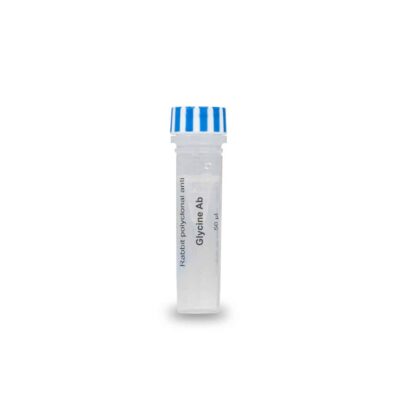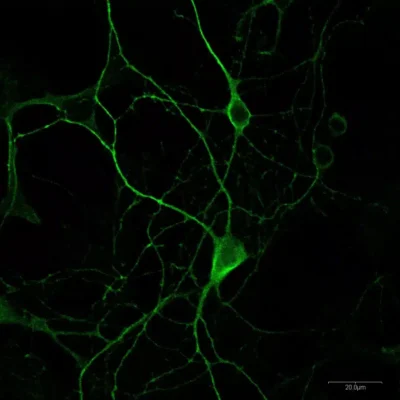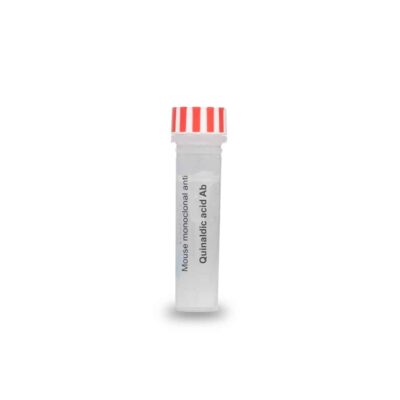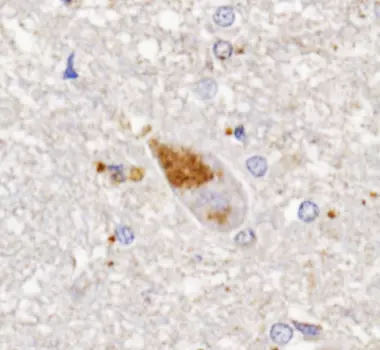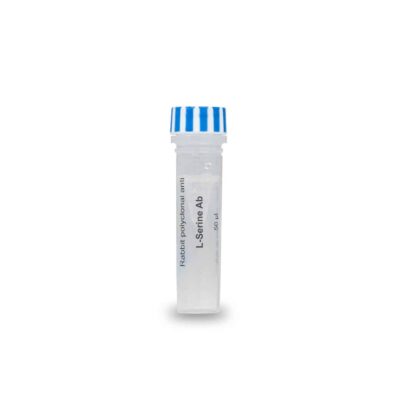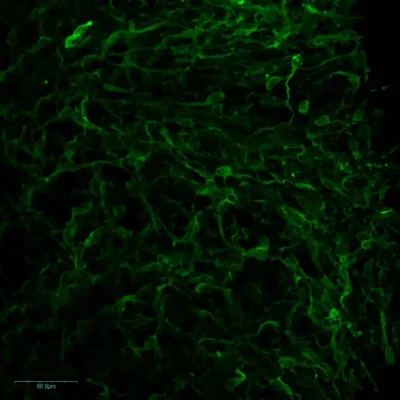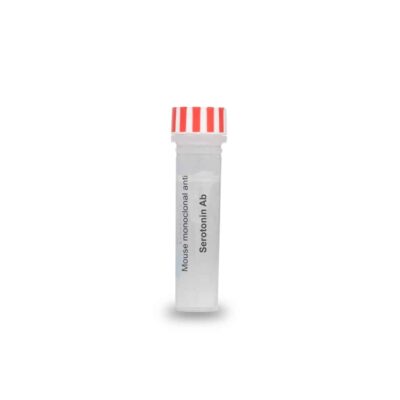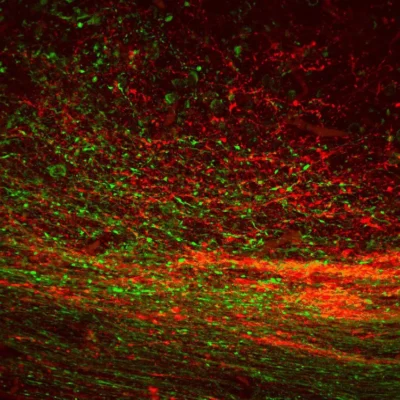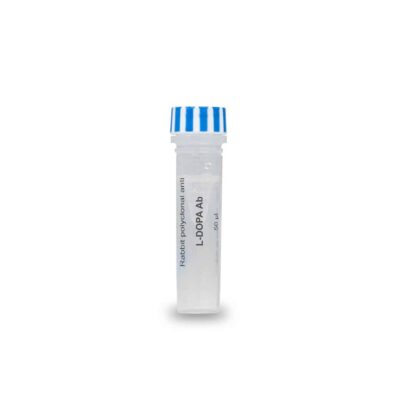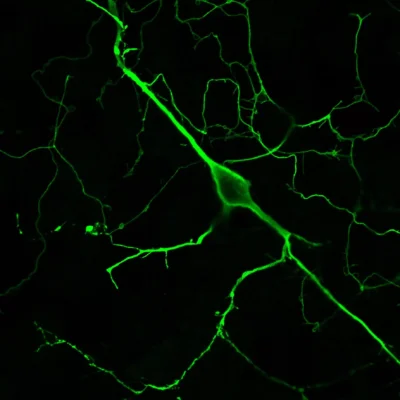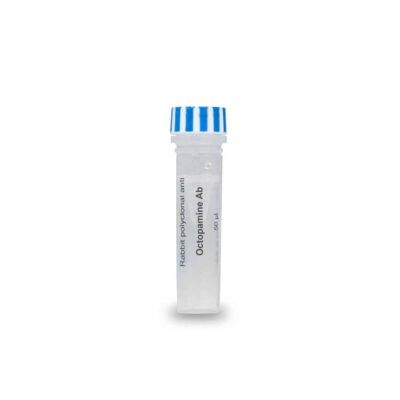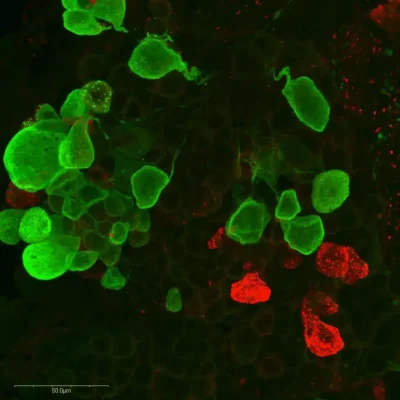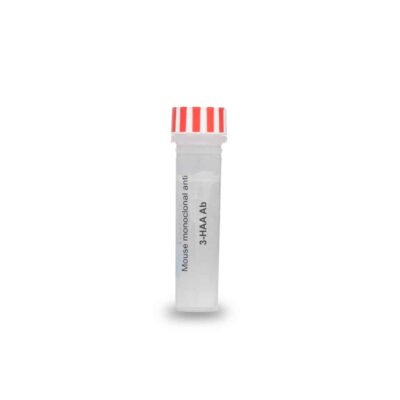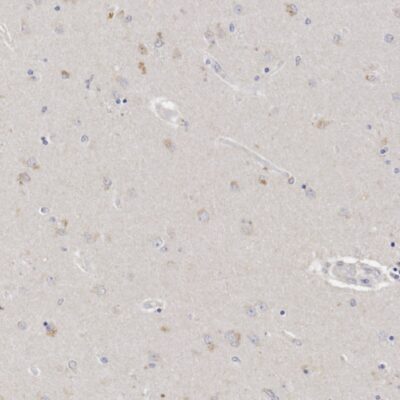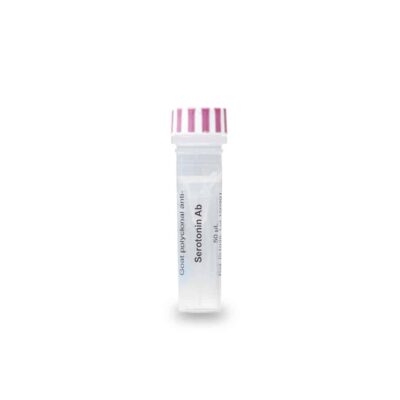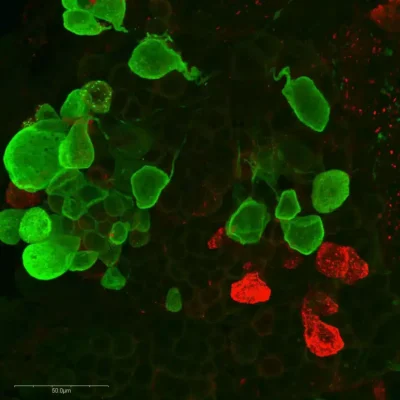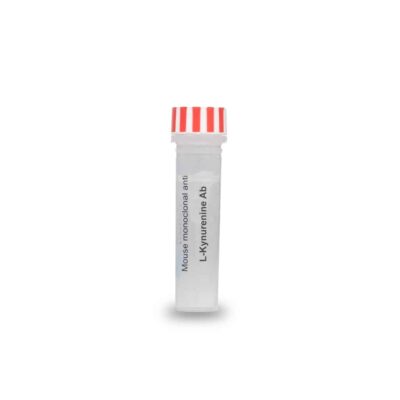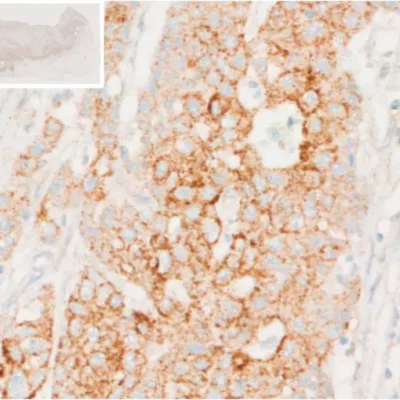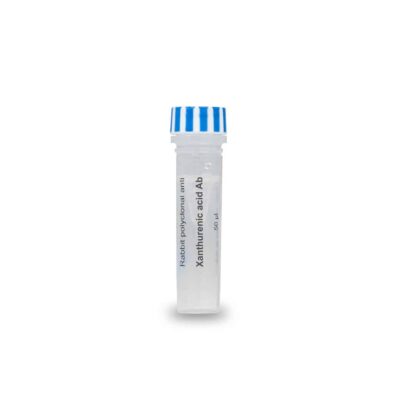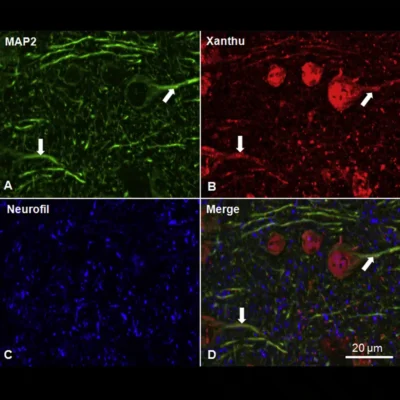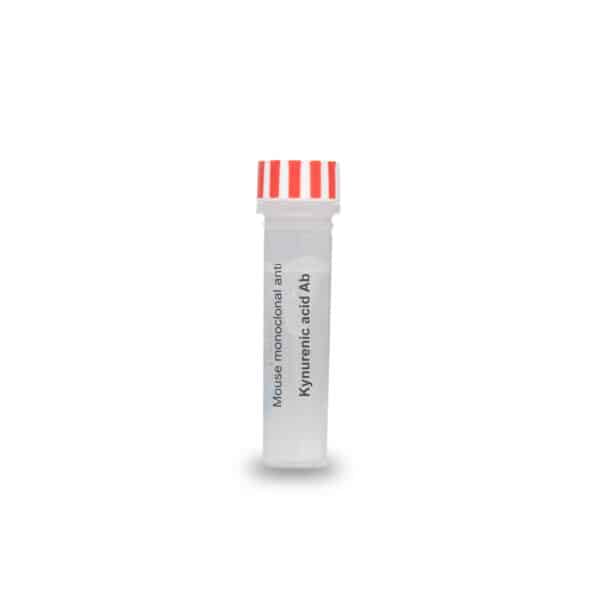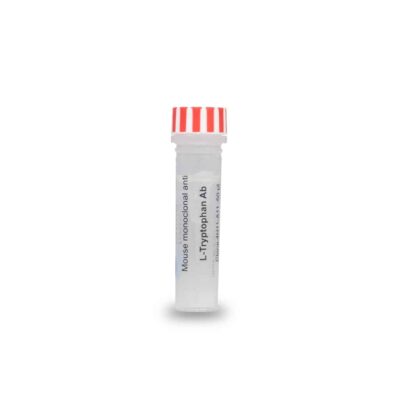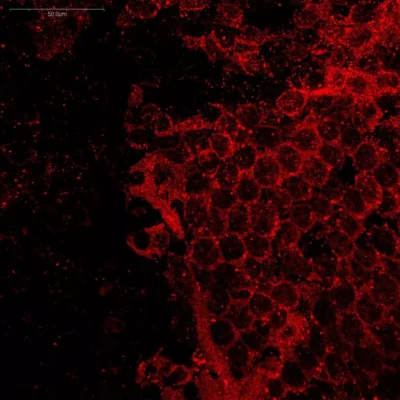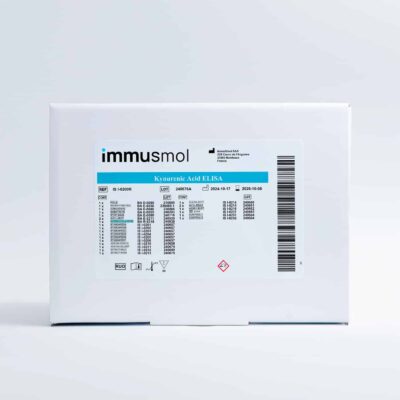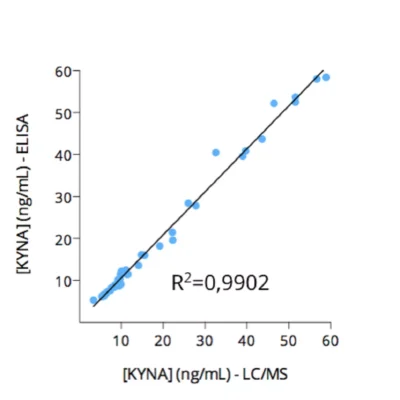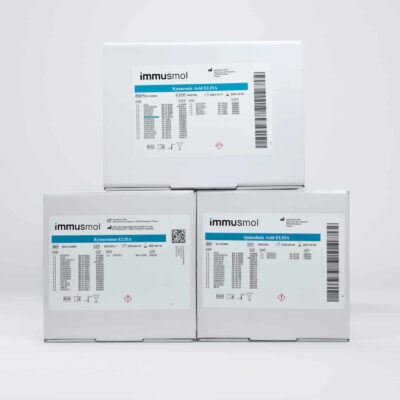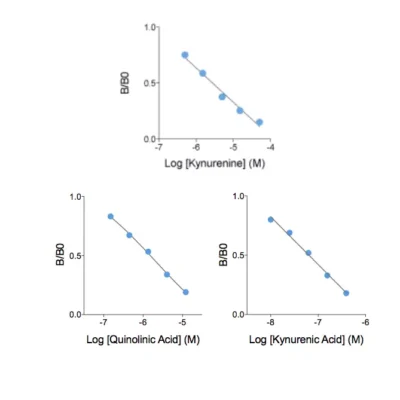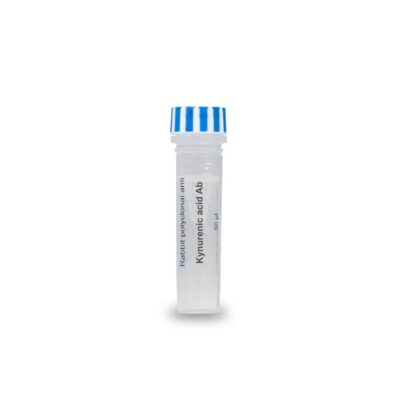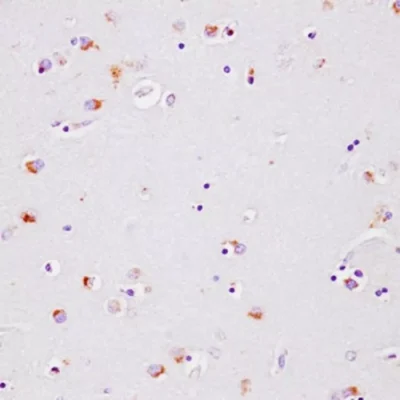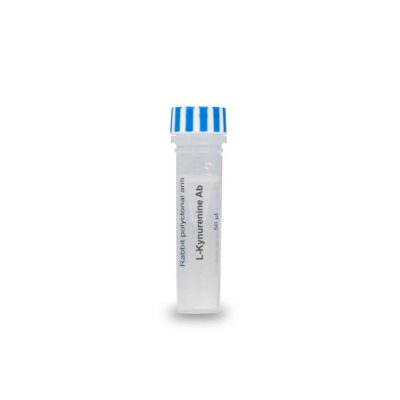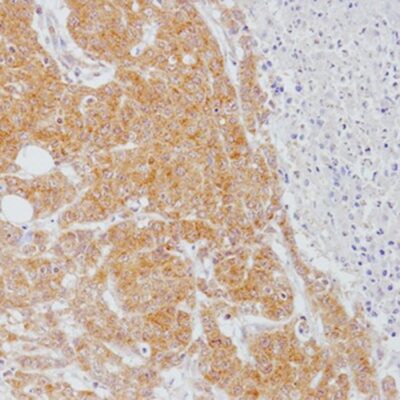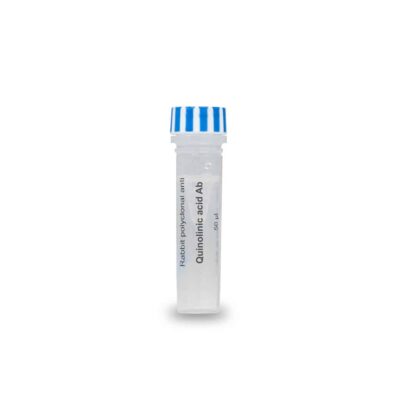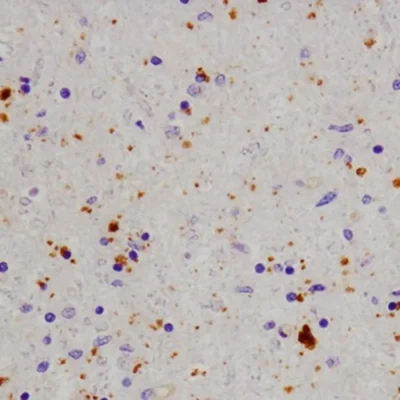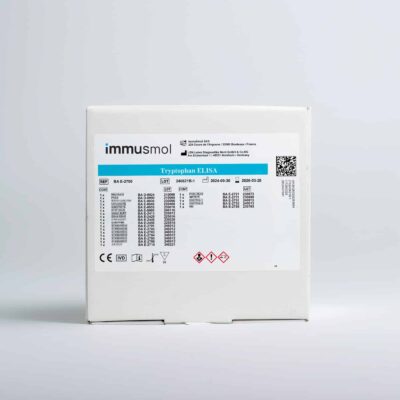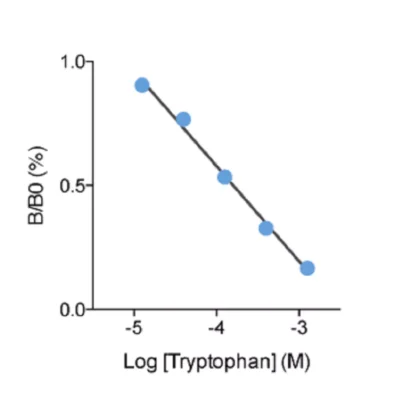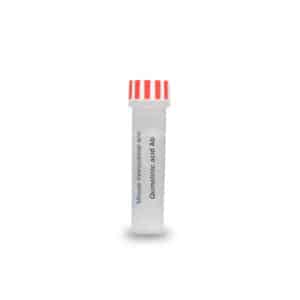- Home
- Products
- Antibodies
- Kynurenic acid Antibody - Mouse Monoclonal
Related products
Quinaldic acid Antibody – Mouse Monoclonal
€ 449
L-Serine Antibody – Rabbit Polyclonal
€ 449
Serotonin Antibody – Mouse Monoclonal
€ 449
3-HydroxyAnthranilic acid Antibody – Mouse Monoclonal
€ 449
L-Kynurenine Antibody – Mouse Monoclonal
€ 449
Xanthurenic acid Antibody – Rabbit Polyclonal
€ 449
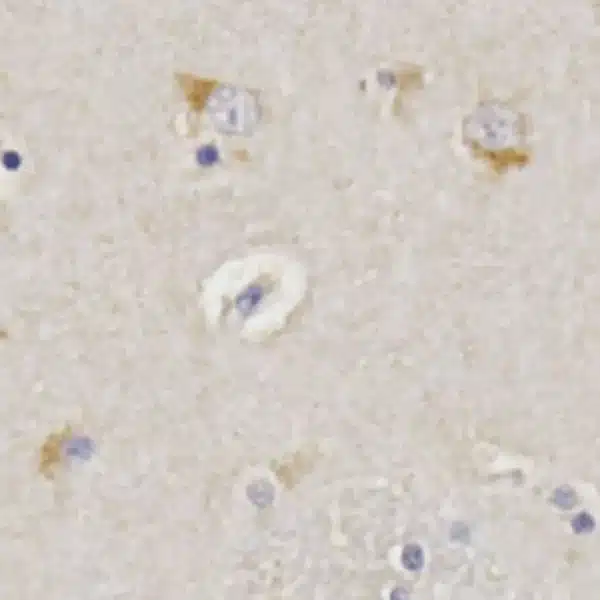 Kynurenic acid detection in human brain by IHCImmunohistochemical analysis highlights cytoplasmic presence of kynurenic acid in glial cells in human caudate putamen. Paraffin-embedded brain tissue section was subjected to pH=6 antigen retrieval followed by overnight incubation with primary anti-kynurenic acid antibody (dilution 1/500). After incubation with polymer-conjugated secondary Ab, DAB was used to visualize the staining.
Kynurenic acid detection in human brain by IHCImmunohistochemical analysis highlights cytoplasmic presence of kynurenic acid in glial cells in human caudate putamen. Paraffin-embedded brain tissue section was subjected to pH=6 antigen retrieval followed by overnight incubation with primary anti-kynurenic acid antibody (dilution 1/500). After incubation with polymer-conjugated secondary Ab, DAB was used to visualize the staining.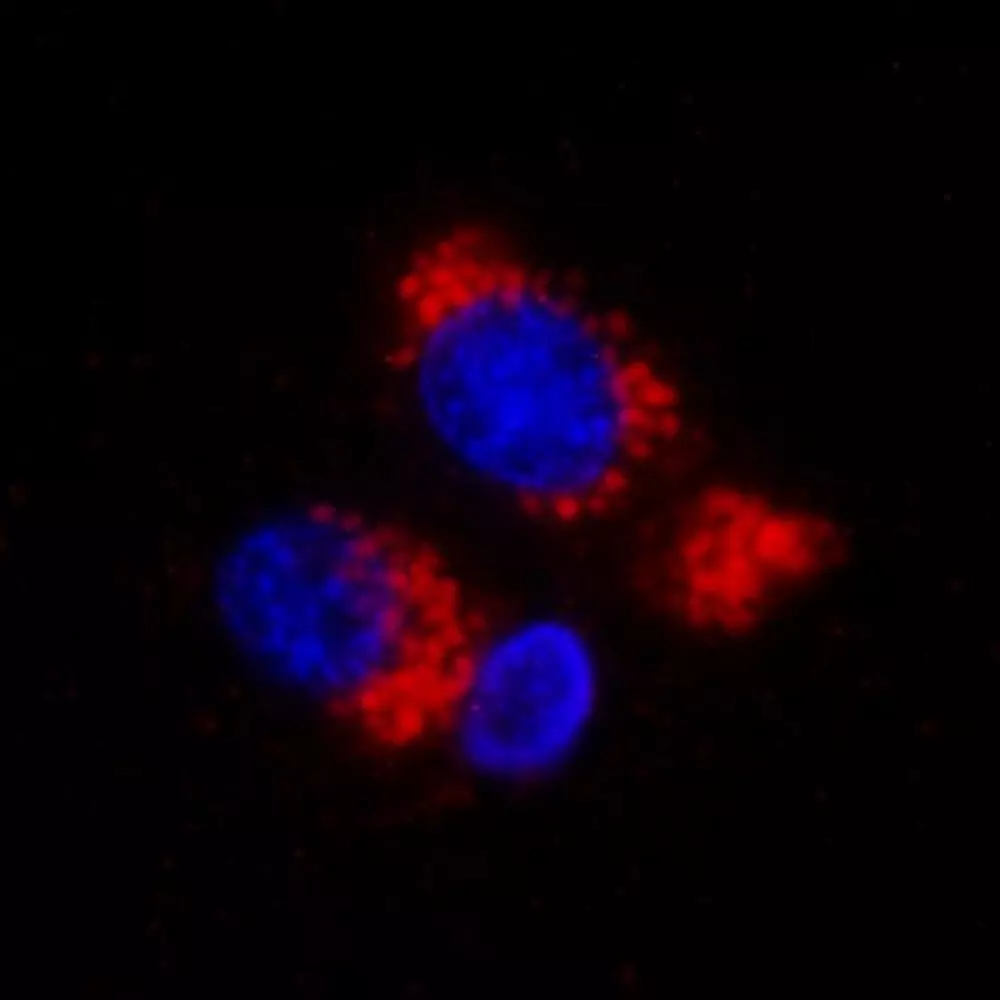 Kynurenic acid detection in human brain by IF (mouse mAb)Immufluorescence shows kynurenic acid accumulation in the cytoplasm of glial cells in human caudate-putamen. Paraffin-embedded tissue section was subjected to pH=6 antigen retrieval followed by overnight incubation with primary anti-Kynurenic acid antibody (dilution 1/250). After incubation with fluorescent dye-conjugated secondary Ab, epifluorescence microscopy (100X) was used to visualize the staining.
Kynurenic acid detection in human brain by IF (mouse mAb)Immufluorescence shows kynurenic acid accumulation in the cytoplasm of glial cells in human caudate-putamen. Paraffin-embedded tissue section was subjected to pH=6 antigen retrieval followed by overnight incubation with primary anti-Kynurenic acid antibody (dilution 1/250). After incubation with fluorescent dye-conjugated secondary Ab, epifluorescence microscopy (100X) was used to visualize the staining.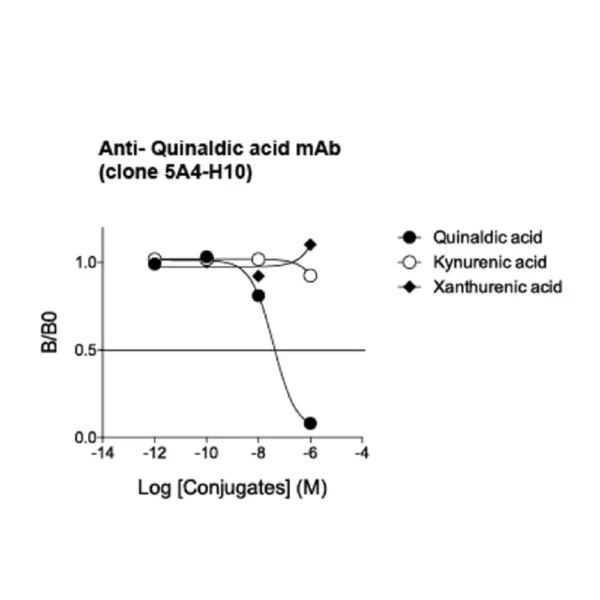 Affinity & Specificity of anti-Quinaldic acid antibodyCompetitive ELISA demonstrates that moderate amounts of Quinaldic acid conjugate are required to abolish antigen-antibody reaction (satisfying affinity), while rising concentrations of Kynurenic and Xanthurenic acid conjugates do not affect the reaction (high specificity).
Affinity & Specificity of anti-Quinaldic acid antibodyCompetitive ELISA demonstrates that moderate amounts of Quinaldic acid conjugate are required to abolish antigen-antibody reaction (satisfying affinity), while rising concentrations of Kynurenic and Xanthurenic acid conjugates do not affect the reaction (high specificity).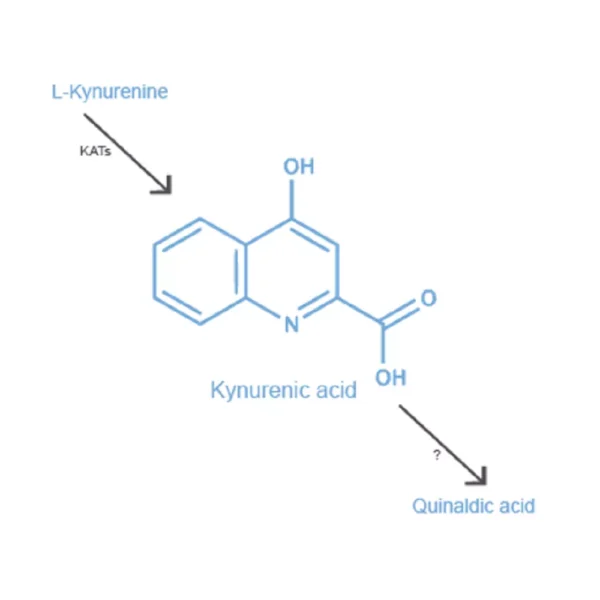 Kynurenic acidAerobic L-tryptophan degradation via the kynurenine pathway produces a range of neuroactive metabolites, including endogenous neurotoxin quinolinic acid and neuroprotective kynurenic acid. Kynurenic acid indeed possesses several molecular targets with antagonistic activities on the NMDA receptor and the a7-nicotinic cholinoceptor (a7NR). Recently Kynurenic was also described to activate the orphan G-protein-coupled receptor GPR35.
Kynurenic acidAerobic L-tryptophan degradation via the kynurenine pathway produces a range of neuroactive metabolites, including endogenous neurotoxin quinolinic acid and neuroprotective kynurenic acid. Kynurenic acid indeed possesses several molecular targets with antagonistic activities on the NMDA receptor and the a7-nicotinic cholinoceptor (a7NR). Recently Kynurenic was also described to activate the orphan G-protein-coupled receptor GPR35.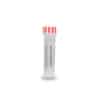


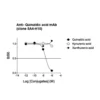
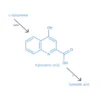
Key features
| Clonality | Monoclonal antibody (clone 4G12-A12) |
| Host | Mouse |
| Reactivity | Reacts with all species |
| Tested samples | Human brain tissue sections |
| Staining procedure | Perform heat antigen retrieval (pH=6) before standard IHF/IF staining |
| Format | 50µL (approx. 40 tissue sections) |
Citations
- 2023 Dongen et al., - Atheroma plaque microenvironment stimulates kynurenine production by macrophages to induce endothelial adhesion molecules in the context of atherogenesis, bioRxiv, Species : Human ; Sample type : Plasma ;
Frequently asked questions
Kynurenic acid Antibody – Mouse Monoclonal
The monoclonal IS010 anti-Kynurenic acid antibody was validated for IHC and IF in human caudate putamen tissues. Competitive ELISA demonstrated the antibody to be highly affine and specific.
€ 449
75 in stock
| Save with quantity discounts | Range | Unit price after discount |
|---|---|---|
| 3 to 5 antibodies (any reference) | 3 - 5 | 11.135857% € 399 |
| 6+ antibodies (any reference) | 6 + | 15.59% € 379 |
Pay by online or by purchase order
Pay by credit/debit card or generate a quote at checkout (your products will be sent once you provide us with the purchase order)
Fast Worldwide Shipping with Fedex
We ship your order door-to-door in all countries with FedEx International Priority®.
Worry-free Warranty
Made a mistake ordering ? 30-day free return & refund.
Product damaged during shipping ? Free replacement.
Not getting satisfactory results ? If product did not meet quality standards, customer support offers replacement or refund.
Direct Customer Support
For questions, protocol recommendations, and troubleshooting, you have direct access to the scientist that developed the antibody or ELISA kit you’re using.
Direct customer support is available all business days.
A knowledge base containing protocols, Frequently Asked Questions, and troubleshooting tips is also available online.
They published with this product
You may also like…
L-Tryptophan Antibody – Mouse Monoclonal
€ 449
Kynurenine/Kynurenic Acid/Quinolinic Acid ELISA pack (3-KYNs ELISA pack)
€ 1.499€ 1.797
Kynurenine Antibody (L) – Rabbit Polyclonal
€ 449
Quinolinic acid Antibody – Rabbit Polyclonal
€ 449
IS010
Kynurenic acid Antibody – Mouse Monoclonal
Anti-Kynurenic acid mAb – Purified monoclonal antibody for research use only (liquid 50µL)
Specifications
| Product name | Kynurenic acid antibody |
| Synonyms | Kinurenic acid antibody
4-Hydroxyquinoline-2-carboxylic acid antibody KYNA antibody |
| Immunogen | Conjugated kynurenic acid |
| Isotype |
IgG1 k chain |
| Clone |
Clone 4G12-A12 |
| Specificity | When tested in competitive ELISA, the anti-Kynurenic antibody 4G12-A12 did not show any significant cross reactivity with Quinaldic, Xanthurenic, Anthranilic, Picolinic or Quinolinic acid conjugates |
| Volume | 50 µL |
| Form | Liquid |
| Purity | Purified IgG |
Instructions
| Storage |
Store at +4°C for short term (6 months). Aliquot and store at -20°C for long term. Avoid repeated freeze / thaw cycles |
| Immunohistochemistry (IHC) | Dilute at 1:200-1:2000. Perform heat antigen retrieval (pH=6) before initiating IHC staining protocol on paraffin-embedded and frozen sections |
| Immunofluorescence (IF) |
Dilute at 1:100-1:1000 on paraffin-embedded and frozen sections. Perform heat antigen retrieval and incubate with fluorescent dyes conjugated secondary antibody |
| Comments | Optimal working dilutions must be determined by the end-user |
| Restrictions | For research use only |
